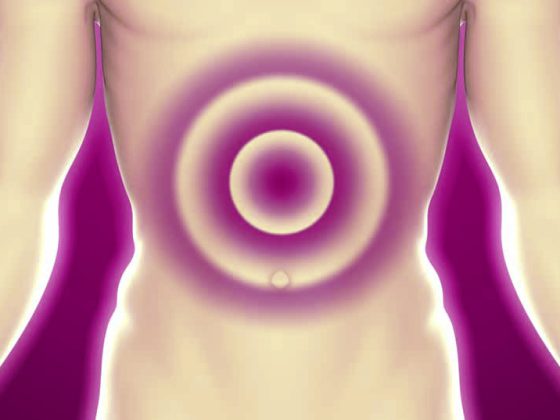The topic of sun protection is a “perennial issue” that is once again highly relevant, especially now in spring, when the days are getting longer and the hours of sunlight are increasing. What exposure to the sun should be recommended to patients, and what special care should be taken with photoprotection? In an interview with DERMATOLOGIE PRAXIS, Prof. Dr. med. Stephan Lautenschlager, Chief Physician of the Dermatological Outpatient Clinic Stadtspital Triemli, clarifies the most important questions. In addition, it deals with vitamin D supply and epidemiological aspects.
Prof. Dr. Lautenschlager, sun exposure is a cause of skin cancer – most people know that today. What other skin diseases can be triggered by excessive UV exposure?
Prof. Dr. Lautenschlager:
In addition to the positive sides of sun exposure on the skin such as warmth, mood elevation, increased comfort and vitamin D synthesis, there is unfortunately a multitude of side effects in addition to UV carcinogenesis, sunburn as well as chronic light damage to the skin. For example, numerous drugs can trigger photodynamic reactions, especially with simultaneous UVA exposure. Among phototoxic reactions, which are much more common, the tetracyclines deserve special mention. These reactions may manifest as dermatitis, pigmentation, photoonycholysis, or so-called pseudoporphyria. Typical triggers of photoallergy are hydrochlorothiazide and phenothiazine. Also to be mentioned in this context are phyto-photoallergic reactions such as after contact with giant chervil. Due to the frequency, the actual photodermatoses – the idiopathic light dermatoses (including polymorphic light dermatosis and urticaria solaris) – must be mentioned in addition; very rare are the porphyrias.
Furthermore, light provocable reactions on diseased skin as e.g. in some forms of lupus erythematosus as well as in mucinoses, dyskeratosis follicularis and bullous dermatoses have to be listed. It is known that diseases such as herpes labialis, but sometimes also lichen ruber or psoriasis vulgaris can be UV-triggered or worsen. Cosmetically relevant are the negative effects caused by UV rays in chloasma and rosacea. Thus, the spectrum of UV-triggered skin changes is very broad.
Is there any such thing as a healthy tan on the skin at all, or should you strive to keep it as pale as possible?
In fact, contrary to popular belief, a healthy tan does not exist. It is well known that skin tanning is a defense mechanism against UV rays. After a day of bathing in the sun, hundreds of DNA errors that have developed are repaired during the night. Since Switzerland has become an outdoor society and a lot of leisure activities take place outdoors, the right way to deal with the sun must therefore be found. It would be additionally pleasing if the cliché of the healthy, sporty tan in our width degrees could be corrected again somewhat.
What is the most useful type of sunscreen?
Based on numerous studies, it has been found that first, reduction of sun exposure, second, textile sun protection, and third, correct application of appropriate sunscreens are most important, in that order. However, the effective clothing protection often has less chance of application than the sunscreen in our country for reasons of practicality.
What are the differences in sunscreens, apart from the sun protection factor?
In addition to the wide range of different galenic forms, from Fluid Extrème to paste, for example, the physical (inorganic) sun protection filters must be distinguished from the chemical (organic) filters. To ensure optimum photoprotection, modern broad-spectrum light stabilizers often contain a different number of both components. The inorganic micropigments (titanium dioxide and zinc oxide), which mainly reflect UV rays, often have the disadvantage of a certain whitening of the skin, which can be perceived as cosmetically disturbing.
What to consider when handling sunscreens (when to apply, what amount, how often to repeat)?
By far the most important factor for effectiveness is applying a sufficient amount. The application rate for testing sunscreens is 2 mg/cm2, which means about 30 g for a whole-body application for an average adult size. This amount is practically never applied. Equally important is additionally the uniform distribution, which can be particularly difficult at the back as well as at the border of the swimwear. When using organic sunscreens, the product should be applied 15 to preferably 30 minutes before the start of sun exposure. During this time, the filters can penetrate the epidermis. It is also better to seek shade after the protection period specified by the sun protection factor has expired and not reapply cream. Reapplication of sunscreen, on the other hand, is necessary after prolonged swimming, sweating or rubbing off. Basically, it is crucial that sunscreens are not misused to prolong sun exposure.
Do you have to consider the different seasons when protecting yourself from the sun – and if so, how?
Depending on the temperature, the galenics of the sunscreen should be considered. Especially in the winter season, use a greasy rather than watery base when skiing to avoid any cold damage. Accordingly, aqueous bases can be used more at warmer temperatures. In the absence of skin conditions that require year-round use, daily application of sunscreen is not necessary in our latitudes (except for staying in the mountains) during the winter.
Is there a risk of vitamin D deficiency from consistent sun protection?
Time and again, press releases subvert skin cancer prevention efforts by recommending sun exposure for vitamin D formation. Apart from isolated cases (such as those resulting from strict UV prevention in patients with xeroderma pigmentosum), no relevant risk of vitamin D deficiency is to be expected from the use of consistent sun protection from spring to late autumn. Only a very low dose of UVB radiation is necessary for the production of vitamin D in the body; for example, a few minutes daily in sunny weather with sun exposure of the face and hands and forearms is sufficient. Of course, vitamin D balance and bone metabolism should be checked in especially elderly persons in nursing homes without any sun exposure and substituted perorally if needed.
Is it useful to “pre-tan” the skin in a solarium or to visit a solarium to prevent vitamin D deficiency?
New data show that pre-tanning in a tanning bed, despite avoiding sunburn, significantly increases the risk of developing melanoma because of an overall increase in UV radiation. Data suggest a fourfold increased risk of melanoma in tanning bed users even without a history of sunburns. In addition, it should be said that in the solarium practically only UVA is emitted, which has no significance for vitamin D formation in the skin.
What applies regarding sun protection for people suffering from a skin disease (acne, psoriasis, seborrheic dermatitis, etc.)?
Similar to the season, the basis of the product plays a role here. Comedogenic, highly oily products are unlikely to be suitable for a patient with acne or pronounced seborrhea, while they may be helpful in a patient with psoriasis.
Switzerland has the highest melanoma incidence rate in Europe. How do you assess the situation regarding UV radiation and the corresponding skin diseases in Switzerland – has the situation regarding sun protection improved in recent years?
In fact, we Swiss have an inglorious top ranking in this area. However, as is so often the case, different reasons are decisive here as well. In addition to the certainly high UV exposure with corresponding leisure time behavior as well as the unfortunately still liberal use of solariums, the high life expectancy should be mentioned. In addition, there is an increasing number of immunosuppressed patients with clustered skin tumors. However, good diagnostics and consistent recording in registries also play an important role in the high number of skin tumors.
Interview: Andreas Grossmann
DERMATOLOGIE PRAXIS 2015; 25(2): 21-23











